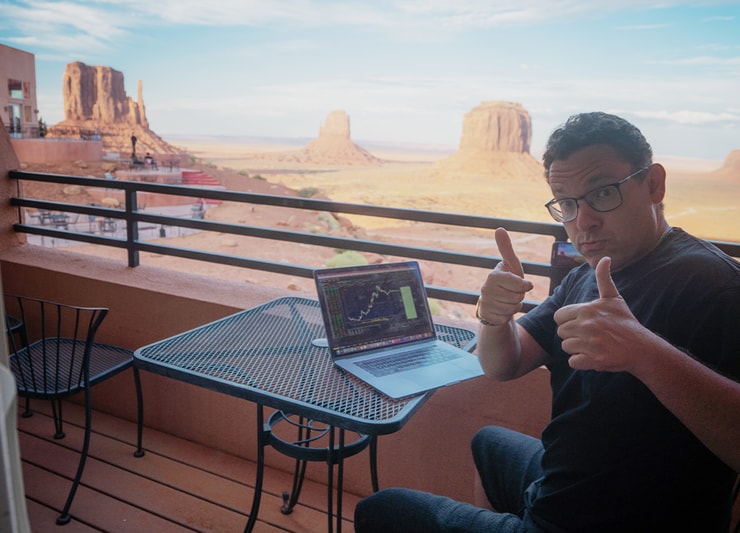Most traders on social media like to portray themselves as perfect…
Every buy is made at the low…and exited at the highs.
They’ll even doctor up images to show you how amazing their execution was.
They’ll even attack me, and call me a piker.
Last I’ve checked, I’ve made over $7.4 million in trading profits. And I have over 30 students who have become millionaires after taking my program.
But despite all my success…I know I’m far from being perfect.
In fact, one of my biggest struggles, even after 20 plus years of trading, is patience.
I tend to get out of winning trades way too early…
The other day I caught IDAI, getting in at $1.74 and out at $1.86…meanwhile the stock went to $2.90…grrrr.
I’m super impatient and it’s something I’m still working on to improve.
But you know what?
I just had one of my most patient trades in a LONG TIME.
It’s all about the strategy and the setup.
If you’re struggling with sticking with your trades then you’re going to want to listen up because this could be a game changer for you.
Another Way To Trade Catalysts

I often say that 8 out of 10 stocks will follow the overall market.
However, I’m not really interested in those types of stocks.
You see, as a short term trader I need volatility.
Volatility is what allows me to enter and exit trades quickly.
And in order to get that volatility you typically need a catalyst.
That’s why I love StocksToTrade Breaking News. It delivers market moving news faster than any other service I know.
But the trade I’m about to tell you about didn’t require rapid action.
In fact, this is a trade I had to sit on for a few days…something that’s not easy for me at all.
Let me tell you about the play and why it worked so well.
The Catalyst Runup in Fisker (NYSE: FSR)
Fisker Inc. has been pumping up their Product Vision Day…
Something is coming… You won’t want to miss our Product Vision Day, August 3rd at 4 PM. Link to livestream here: https://t.co/JXktyPwCF7 pic.twitter.com/64IQxpka6r
— Fisker Inc. (@FiskerInc) July 28, 2023
I felt this was a good opportunity to ride the hype up.
So I bought shares on Friday, at $5.83…
Usually for my weekend trades I will look to get out on Monday.
But I knew that I could stay in the trade longer if it didn’t experience a large sell-off because the event was still a few days away.
And that’s exactly what I did…
I stayed in till Tuesday, getting out at $6.17…which was good for a 5.8% gain.
Now you might be thinking, that’s cool Tim, but didn’t the stock go up to $6.76 on Thursday…
It did…
But in terms of managing risk, I feel like it’s always better to ride the hype up and sell into the momentum.
I tried my best to hold on longer than I typically do, so I’m happy with myself with how I handled it.
Plus it looked like it was triple-topping there for a moment.
The stock did go down to about $6 on Wednesday when the market sold off, so getting out on Tuesday wasn’t the worst exit.
Nonetheless, this is a strategy worth exploring more.
Several companies will announce product reveals, investor days, FDA announcements, and so on…whether they will be positive or negative we don’t know.
But there’s a chance that shares will rise leading up to the event if the company does a good enough job of hyping it up.
And although Fisker delivered yesterday, they easily could have disappointed… and the stock could have tanked.
That’s why I say to play the hype…and sell the momentum.
Taking The Next Step

I used my weekend strategy to find this play in FSR.
If you would like to learn more about how it works, and how it’s responsible for some of my most memorable wins then CLICK HERE TO WATCH THIS.




Leave a reply